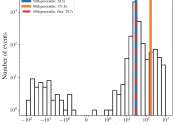Researchers chart Orion Nebula like never before
Star and planet formation is a messy affair. It starts with the gravitational collapse of a gigantic cloud of gas and dust, which simultaneously produces massive stars, whose intense radiation field creates a harsh environment, ...








